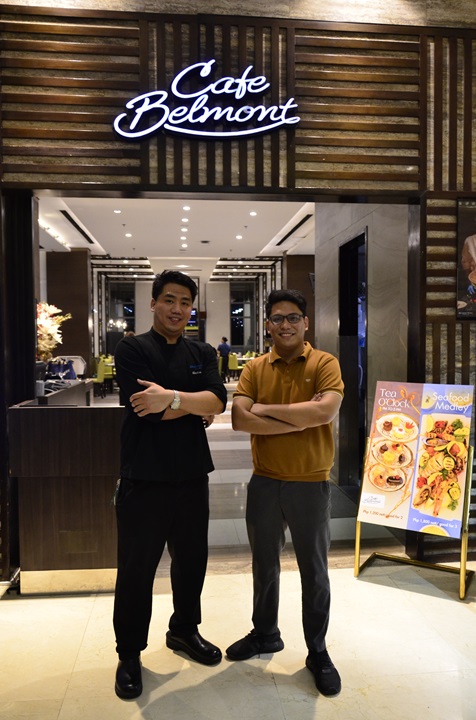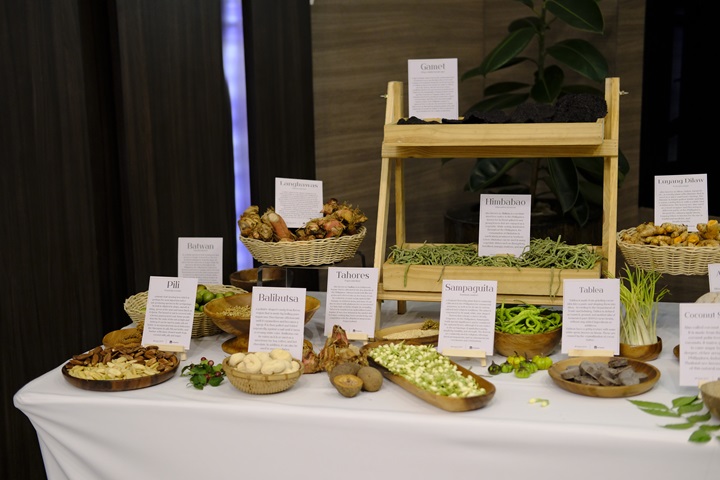Every April, food establishments around the country celebrate Filipino Food Month through offerings that bring back diners’ attention to authentic Filipino cuisine. Belmont Hotel Manila, a 4-star airport hotel, and Lokalpedia, an online archive of local ingredients, do this and more in their shared commitment to preserving Filipino food heritage.
Pamana is a weekend dinner buffet collaboration by Belmont Hotel Manila and Lokalpedia Founder, John Sherwin Felix, at the hotel’s Café Belmont restaurant, that puts a spotlight on overlooked and rarely used local ingredients.
“It all started with our continuous effort to inject Filipino culture in our services and offerings. Belmont Hotel Manila’s, together with its mother brand Megaworld Hotels & Resorts, ongoing commitment is to preserve, promote and uplift everything local. But, we wanted something that would go deeper than just presenting Filipino cuisine. Fortunately, we discovered Lokalpedia. The content he was sharing was unlike any other, most especially his advocacy.” says, Marla Mendoza, Marketing & Communications Manager of Belmont Hotel Manila.

Lokalpedia was founded by 27-year old John Sherwin Felix. He was raised in San Jose, Occidental Mindoro, by a Mother who loved cooking and using fresh ingredients. This attention to food and her innovativeness was instilled in Sherwin and stirred his curiosity for local food, to the extent that he quit his Public Relations Agency day job to focus on Lokalpedia full time. Lokalpedia is an online archive of Filipino heritage ingredients (from fruits, vegetables, grains, starches, and more) found on both Facebook and Instagram. Here, Felix documents a wide array of native, endemic, and heirloom ingredients through captivating photos and informative captions from his extensive research and travels across the country.
“Lokalpedia is a passion project with a mission to document and raise awareness about the Philippines’ rich food culture and system. I felt the absence of available information on our country’s rich food heritage. I felt the need to fill the gap even in my own little way. There is so much to discover about Philippine biodiversity and it would be such a waste if only a few know about them.” says Felix about his endeavor.
Felix’s online archive caught the attention of many back in 2021 when his feature of the endangered salt from Bohol, the Asin Tibuok, went viral and consequently helped revived the industry.
For Pamana, Felix collaborated with Belmont Hotel Manila’s Executive Chef Andrew Ko to execute a buffet menu that makes use of the very ingredients that he has long been profiling.
“Pamana is Tagalog for heirloom and we chose this name for the buffet because both the menu and most of the ingredients are both passed down from one generation to another. I was inspired by the versatility of the ingredients that Mr. Felix presented and what immediately came to mind are traditional Filipino dishes that are distinct from different regions. I knew the dishes would be made even extraordinary and interesting with the incorporation of these overlooked ingredients.’’ says Belmont Hotel Manila Executive Chef Andrew Ko.
Some of the culinary gems of the Pamana buffet include:

Kansi, the popular Western Visayas sour soup made of beef shanks and jackfruit, and authentically soured with the use of Batwan- an endemic species of fruit bearing tree most commonly found in Western and Eastern Visayas wherein its leaves are used as a souring agent.
Ensaladang Himbabao sa Sinamak, features the indigenous vegetable Himbabao which are trees native to the Philippines that is distinct for its hanging floral spikelet. They are prominently found in Northern Luzon but rarely seen in public markets outside the region.
Kinilaw na Tuna with Gamet, Langkawas and Sampaguita. Gamet, is Philippines’ own version of Japanese Nori. It is a marine algae mostly found in Ilocos and Cagayan that offers an umami taste. Its harvest procedure is hazardous and seasonal as it can only be gathered during the colder season of the year when the waves are big and the winds are strong. It is considered highly prized in the market and has earned the nickname ‘black gold’. Langkawas, is a member of the ginger family and internationally known as Galangal. It is used both as an aromatic and spice in the Archipelago. Sampaguita is celebrated as our national flower and is widely utilized for its ornamental beauty. Yet, its use extends to flavoring food.
Bringhe, is Philippine’s version of the Spanish Paella which originated in Pampanga. This delicacy is given a twist with the addition of Etag. Etag is the traditional process that Cordillera natives do to preserve their meat. It is cured, then smoked or sun-dried giving it a longer shelf life.
Balbacua is a Filipino beef stew cooked for several hours in various spices. In Chef Andrew’s version he incorporated Kalingag—Philippine’s very own cinnamon. Kalingag looks much like laurel leaves that sometimes Filipinos cannot tell the difference. This ingredient is also underutilized in the country. Both its leaves and bark can be used in cooking.
Pansit Buko makes use of thin strips of coconut instead of noodles. It is made savory with assorted vegetables and meat. In this version, Himbabao and Etag were infused.
Asian Tibuok Ice Cream- imagine salted caramel ice cream but making use of Philippine artisanal salt. It is as good as any foreign counterpart and maybe even better.
Cacao Tart is given a twist with the use of Balikutsa, a natural sweetener from Ilocos region made from sugar cane, and our very own Tablea.
These are just some of the gastronomic creations from Executive Chef Andrew Ko that were infused with Lokalpedia’s suggested ‘prized’ ingredients. There is more to taste at the weekend Pamana buffet. Along with the delicious spread, guests can view an actual display of the ingredients to fully appreciate the essence of this collaboration.

